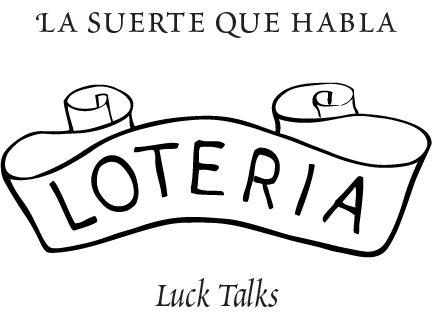Playing Lotería: La Suerte Que Habla | Luck Talks
A selection of photos taken from Lotería play sessions that took place in:
Universidad de las Américas, Puebla (Mexico), Glendon University & University of Toronto (Canada), Lafayette College in Pennsylvania USA, and ALAS – Atelier & Art Space in Frankfurt Germany.

Lotería: La Suerte Que Habla is on its second edition. It was published for exhibition and educational purposes, and is available upon request.
We are currently looking for a publisher to make it available for the general public. Please contact us if interested.
The Traditional game of La Loteria Mexicana

La lotería is a Mexican game similar to bingo, but instead of using numbered balls, it is played with a deck of cards. Each card bears an image that evokes a popular Mexican event, artifact, individual, or other cultural symbol. Players are issued a tabla or board which features a selection of these images. The cantor (or singer) shuffles the cards and then calls them out one by one. But instead of giving the actual title or name of the image, the cantor announces them to the players using a copla or riddle. The players have to figure out what the associated image looks like and then, if they have it, mark it with a frijolito or black bean on their boards. The first one to fill all the spaces on his or her board calls out “Lotería!” and is declared the winner.
In the beginning, Lotería was played only by the upper classes, but it eventually became a tradition at Mexican fairs and among Mexican families of all backgrounds. The first Lotería games (boards and cards) were published around the end of the 19th century, and the images from those traditional games have become iconic in Mexican culture. Although many of those images are now considered to be politically incorrect, the Lotería game remains popular with Mexican families and has also reached the United States and now Canada thanks to the Mexican diaspora.


















